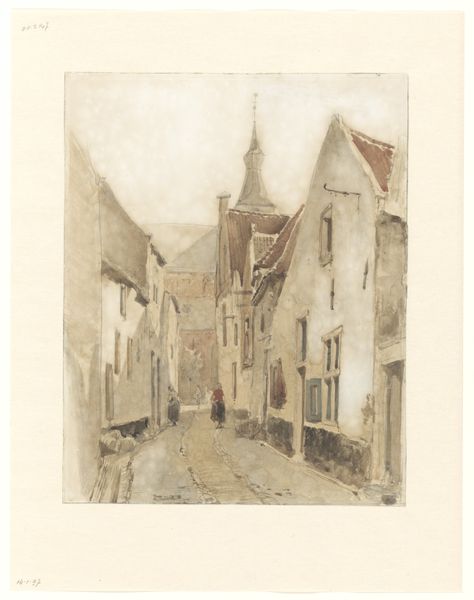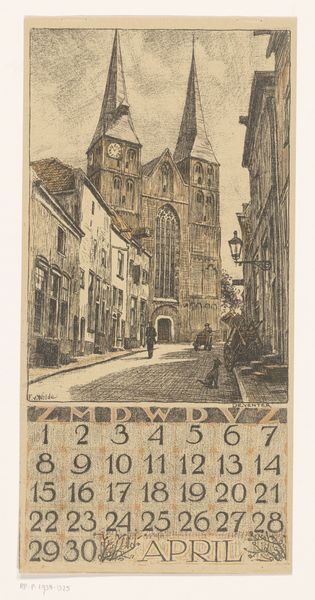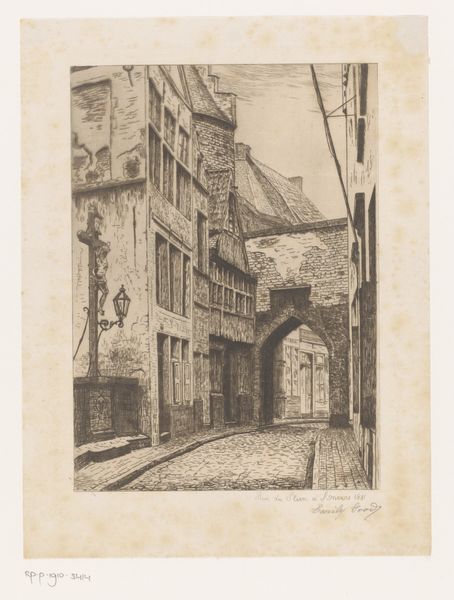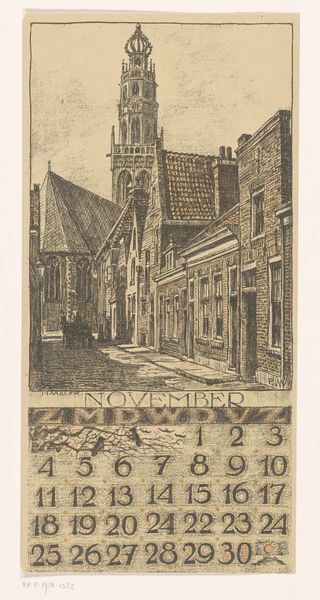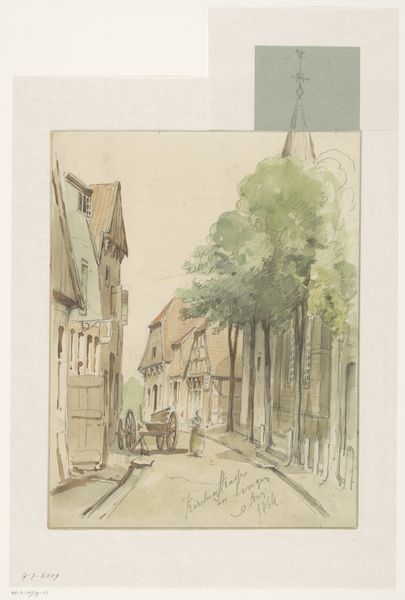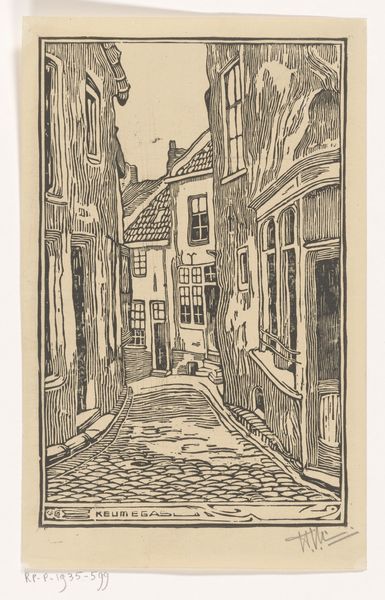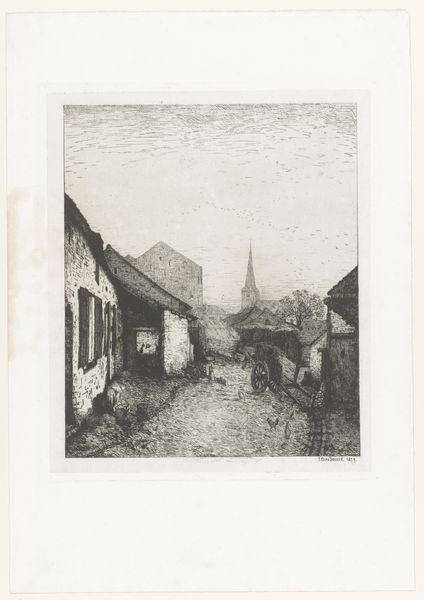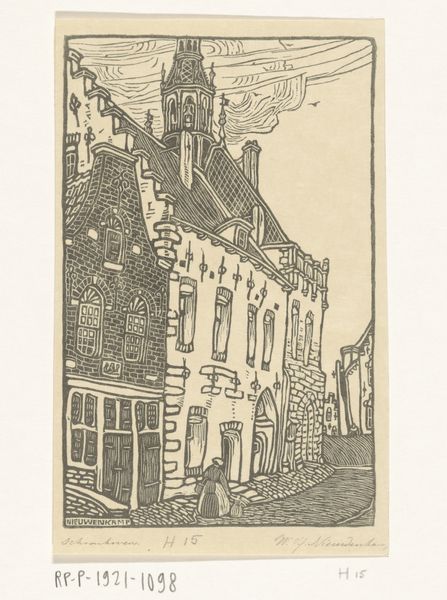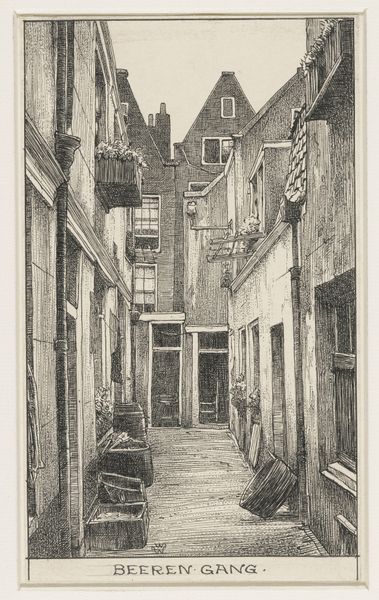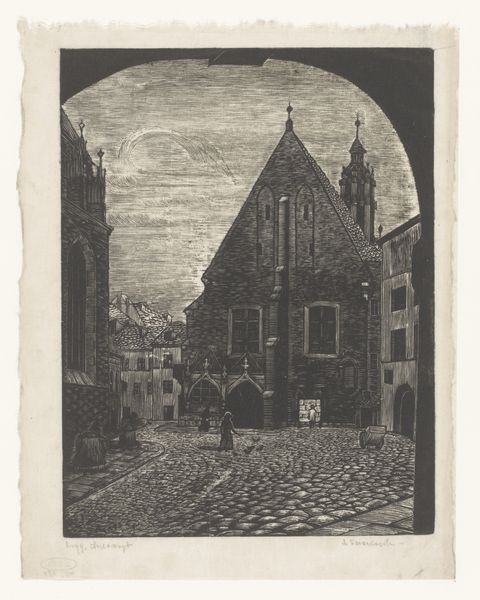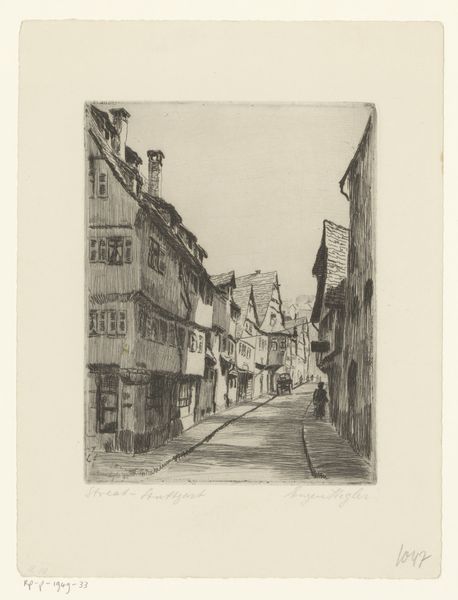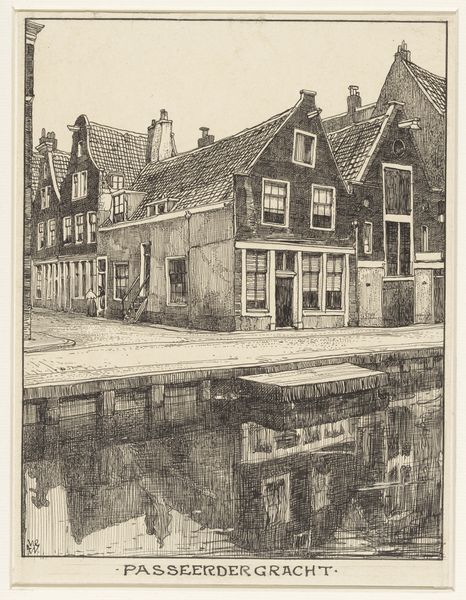
drawing, print, etching
#
drawing
# print
#
etching
#
landscape
#
cityscape
#
watercolour illustration
#
modernism
Dimensions: height 318 mm, width 157 mm
Copyright: Rijks Museum: Open Domain
Editor: This is "Kalenderblad mei met stadsgezicht in Amersfoort" or "Calendar Sheet May with Cityscape in Amersfoort", created by Ferdinand van Wolde in 1923. It’s a drawing and print made using etching techniques. I find the contrasting light and shadow create a certain intimate mood; the narrow cobblestone streets really draw you in. What do you see in this piece? Curator: What interests me here is the intersection of fine art and utilitarian design. Consider the etching process itself – the labour-intensive act of biting into metal, traditionally associated with reproductive printmaking, here employed for a calendar, a fundamentally ephemeral object marking the passage of time and organized labour. The social context is key here: Who would consume this? What does it say about art consumption in the 1920s? Editor: That's a cool perspective. It feels like they're elevating a functional item into art, which is pretty neat. Do you think it says anything about the materials used that this is an etching as opposed to another medium? Curator: Absolutely. Etching, with its capacity for intricate detail and tonal variation, allows van Wolde to capture the nuances of light and shadow on the Amersfoort cityscape. He could have chosen photography, the new industrial reproduction tool, yet he selected a process connected with artisanship. That the artist opted for this suggests a commentary on mass production versus individualized creation, perhaps lamenting lost artisanal skills as the early 20th century industrialized. Does the integration of the cityscape and the calendar information strike you as significant? Editor: Yeah, placing the practical calendar underneath the atmospheric cityscape creates a jarring effect. It definitely shows how deeply art and production were intertwined, but how the labor is often masked or unseen. Curator: Exactly! By showcasing a traditional craft in a manufactured setting, the artist is almost acknowledging the inevitable intrusion of modernity. So much more than just an image of Amersfoort in May! Editor: I never thought about it that way. Now I’m curious about other artists who blended art with functional design in the early 20th century. Curator: Excellent! Now you're starting to think like a true materialist.
Comments
No comments
Be the first to comment and join the conversation on the ultimate creative platform.
